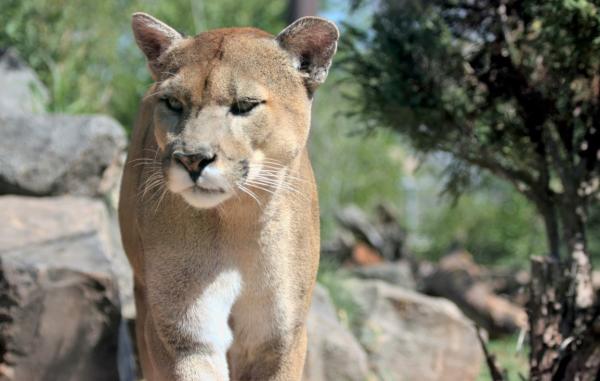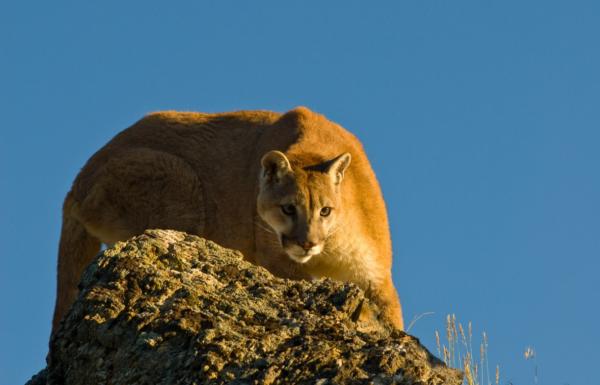The puma (Puma concolor), also known as the mountain lion or cougar, is the second-largest feline in the Americas after the jaguar (Panthera onca) and the fourth-largest wild cat in the world. It has one of the widest ranges among land mammals, stretching from southern Canada through the United States, Central America, and all the way to southern Argentina and Chile.
Despite its adaptability, the puma is facing numerous threats that have raised concerns about its long-term survival. This article explores whether the puma is currently endangered, what threats it faces, and what actions can be taken to protect this iconic predator.

According to the International Union for Conservation of Nature (IUCN), the puma is currently listed as "Least Concern" on a global scale. This means it is considered to be abundant and widespread, with no immediate risk of extinction worldwide.
However, this status can be misleading. While the species may not be endangered overall, regional populations are in decline due to habitat destruction, human conflict, and hunting. In fact, the eastern half of North America saw the puma go extinct many decades ago, and other localized populations are also at risk.
Although exact global population numbers are unavailable due to lack of recent comprehensive studies, historical and regional estimates provide some insight:
Canada: Estimates from 1990 suggest between 3,500 and 5,000 individuals.
United States: Around 10,000 individuals.
Florida: A small, isolated population of around 180 individuals survives, supported by reintroduction from Texas.
Central and South America: Populations are thought to be larger but are not well documented.
Argentina: Populations appear stable overall, but are declining in specific regions like the Chaco.
The health and size of puma populations often correlate directly with levels of legal protection and conservation management in each area.

Although pumas are highly adaptable, they remain sensitive to environmental and human pressures, particularly as top predators in their ecosystems. The most critical threats include:
Agricultural expansion, logging, and urbanization are rapidly reducing and fragmenting puma habitats, leaving populations isolated and vulnerable.
Pumas feed on a variety of mammals—from deer in North America to smaller animals like hares in South America. However, many of these prey species are also declining, limiting food availability for pumas.
Farmers and ranchers often view pumas as threats to livestock and may resort to illegal hunting or poisoning. Pumas are also targeted for trophy hunting and commercial exploitation.
As natural landscapes are replaced by roads and urban areas, pumas increasingly fall victim to vehicle collisions while migrating in search of food, mates, or water.
Puma cubs are sometimes captured and raised as exotic pets, especially when found orphaned after their mothers are killed. However, pumas are wild animals, not suitable for domestication.
In some regions, pumas are illegally captured and kept in enclosures for "guaranteed hunts," where they are released just to be shot by hunters. This unethical practice severely impacts wild populations.

Protecting pumas requires coordinated efforts across education, policy, and conservation. Here are six key ways we can help:
Public awareness campaigns can highlight the puma’s ecological importance and encourage local communities to engage in conservation.
Regional conservation programs can identify threats, monitor populations, and implement strategies to safeguard habitats and reduce conflict with humans.
In areas where legal protection is weak or poorly enforced, improving legislation and on-the-ground enforcement is critical.
Protected natural reserves and wildlife corridors provide safe spaces for pumas to roam, breed, and hunt.
Further studies on puma behavior, genetics, population trends, and habitat use are needed to guide effective conservation decisions.
Solutions like livestock protection measures and community-based predator management can reduce the need for retaliatory killing.
Although the puma is not globally endangered, its populations in many regions are declining due to habitat destruction and human conflict. Protecting this magnificent predator is not just about saving a single species—it’s about preserving the ecological balance of the ecosystems it helps regulate.
Bibliography
Brancatelli, G. I. E., & Yezzi, A. L. (2017). Analysis of puma exploitation in Argentina.
International Union for Conservation of Nature (IUCN) Red Lists. Puma concolor. Web page: https://www.iucnredlist.org/es/species/18868/97216466
Pessino, M. E., Sarasola, J. H., Wander, C., & Besoky, N. (2001). Long-term response of the puma (Puma concolor) to a population decline of the vizcacha (Lagostomus maximus) in the Monte Desert, Argentina.
Secretariat of Environment and Sustainable Development of the Nation and Argentine Society for the Study of Mammals. (2019). 2019 Categorization of Argentine mammals according to their risk of extinction. Red List of Mammals of Argentina. Website: https://cma.sarem.org.ar/es/especie-nativa/puma-concolor
animal tags: Puma
We created this article in conjunction with AI technology, then made sure it was fact-checked and edited by a Animals Top editor.